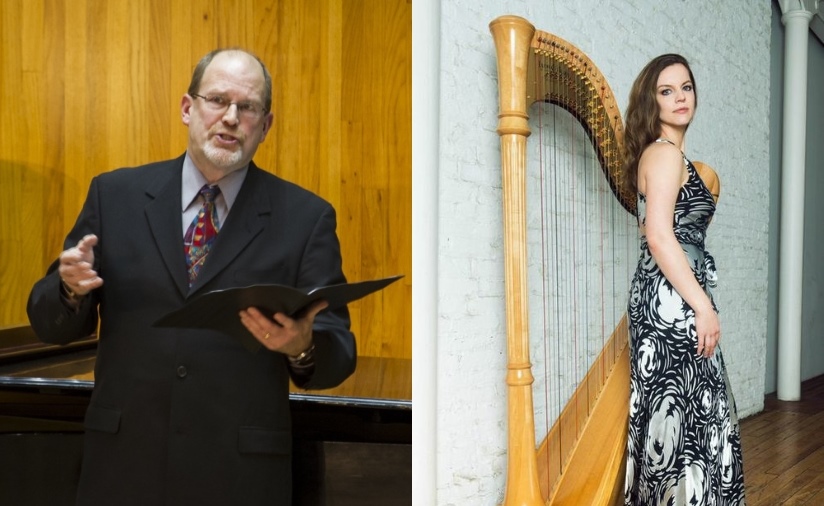Greatest Hits of World War I
Milwaukee Musaik performs poignant music from WWI and post-war period.
As Milwaukee Musaik prepares a third concert, it is obvious that the ensemble is not a reincarnation of the Milwaukee Chamber Orchestra as much as a re-invention. Milwaukee Musaik allows performance opportunities for a diverse group of artists – many once with the chamber orchestra. Flexible ensemble configurations have offered a platform for works that neither an orchestra nor the usual chamber groups can offer; a small transparent string ensemble, a wind and string sextet and now an even more diverse mix.
This Sunday’s concert will feature baritone Paul Rowe for several song cycle selections, harpist Kelsey Molinari lending beauty to three tranquil works, plus a group of four string players (violinists Jeanyi Kim and Alexander Sascha Mandl, violist Nathan Hackett and cellist Scott Tisdel), pianist Martha Fischer, flutist Emma Koi and clarinetist William Helmers.
Titled “In Memorium: Music of the First World War,” the program offers music of remembrance, reflecting the era of World War I, yet drawing upon a wider spectrum of influences.
Three instrumental works play to the strengths of the selected ensemble:
A pastoral melody, George Butterworth‘s The Banks of the Green Willow (1916), based upon a tragic English folksong, has been transcribed for the ensemble. The work became a popular choice for remembrance concerts in Great Britain.
The gothic, macabre stories of Edgar Allen Poe caught the imagination of French composer Andre Caplet. Poe’s short story, “The Masque of the Red Death,” tells of a plague sweeping the land and overcoming the efforts of a Prince and his court to avoid it. Caplet’s 1922 tone poem for harp and string quartet captures the essence of the story in nearly programmatic terms.
Reflective poetry will be featured in several song cycles, often with poetic texts:
The poet Ivor Gurney, deeply affected by World War I, also composed songs from verses by a popular English poet — A.E. Housman — in a song cycle titled The Western Playland (1920-26). Housman’s collection of 63 poems – “A Shropshire Lad” – reflect on love, war and the cycle of life in rural England. “He was popular among composers because of an essential musicality to his lyrics,” program co-organizer Dr. Marguerite Helmers observes. “When he speaks about death, he speaks in a very poignant way .. somewhat at a distance, but as heroic and meaningful.”
An American composer, James H. Rogers, honored the death of his son by setting the words of several poets in a set of six songs, In Memoriam (1919). He features selections by Walt Whitman, whose works have a universality that have attracted many composers to incorporate his words.
The program adds diversity by representing the Central Powers nations with a satirical work by Arnold Schoenberg. Written to amuse the officer corps, the playful piece for piano quintet combines soldier’s songs, mimics bugle calls on piano and features an “animal concert.”
The presence of harp and baritone — rare additions to chamber works — adds substantially to the color and beauty of these selections. The music is not funereal. Debussy’s comment on his selected sonata seems appropriate for the afternoon: “I don’t know whether one should laugh or cry – perhaps both?”
Helmers helped to shape the program and will offer a pre-talk at 2:00 p.m. A professor of English at UW-Oshkosh, she has researched the culture, poetry and political climate of this period across Great Britain.
The concert itself begins at 2:30 p.m.. Milwaukee Musaik has been trying out a little known venue with the charms of a European manor hall. Helfaer Hall is “hidden” within the confines of the charming Mount Mary University campus. Plentiful parking is available at 2927 North 92nd Street, just south of the intersection of 92nd and Burleigh Streets. Walk a few hundred yards to an arcade connecting several buildings. Enter the Caroline Hall to the left and follow signs inside to the attached performance hall.
$25 general seating tickets ($15 for students) may be purchased online or at the door. The online link includes a useful aerial view of the campus that more explicitly locates the hall.
Preview
-
A Sacred Choir, 70 Voices Strong
 Dec 14th, 2025 by Martha Brown
Dec 14th, 2025 by Martha Brown
-
Prometheus Trio Goes Bohemian
 Dec 3rd, 2025 by Martha Brown
Dec 3rd, 2025 by Martha Brown
-
Present Music Offers New Choral Works
 Nov 20th, 2025 by Michael Barndt
Nov 20th, 2025 by Michael Barndt


















